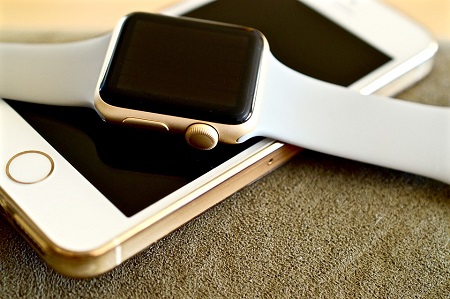Health and activity trackers have easily led the fitness tech category and this is expected to continue next year.
The American College of Sports Medicine (ACSM) has released its fitness trend forecast for 2017 and has placed wearable technology devices at the top. Consumers are owning and using these devices to a rapidly growing degree, says the “Worldwide Survey of Fitness Trends for 2017.”
The report was published in the Health & Fitness Journal from the American College of Sports Medicine.
These wearable technology devices are making it possible for people to track their steps, activity intensity, calories burned and other fitness metrics. FACSM survey lead author and College of Education & Human Development dean at Georgia State University in Atlanta, Walter R. Thompson, PhD, explained “The health data collected by wearable technology can be used to inform the user about their current fitness level and help them make healthier lifestyle choices.”
The survey has placed wearable technology devices at the top of its eleventh annual survey results.
 The survey involves the participation of over 1,800 health and fitness professionals from around the world. Many of those pros are ACSM certified. It is used to provide insight within a spectrum of fitness fields. The participants in the survey were allowed to choose from 42 possible fitness trends. Among the results, the top 20 were ranked and shared within the ACSM outcomes publication.
The survey involves the participation of over 1,800 health and fitness professionals from around the world. Many of those pros are ACSM certified. It is used to provide insight within a spectrum of fitness fields. The participants in the survey were allowed to choose from 42 possible fitness trends. Among the results, the top 20 were ranked and shared within the ACSM outcomes publication.
Among the leading trends from that top 20 list are the following:
1. Wearable tech – this trend included smartwatches, fitness and health trackers, GPS tracking devices and heart rate monitors.
2. Body Weight Training – this is a technique that is considered highly effective and affordable as it requires very little equipment.
3. High-Intensity Interval Training (HIIT) – this involves peppering a workout with intense, brief explosions of physical activity followed by a moment of recovery before returning to the intensity again.
4. Fitness Professionals with Education and Experience – a greater focus is being placed on certification, education and experience in fitness among experts than simply seeking big promises or having some kind of celebrity.
5. Strength training – cardio may be the top calorie burner, but strength training is gaining emphasis for its metabolism boosting and spectrum of additional health and fitness benefits.
Still, among all these broad and widespread trends, wearable technology devices clearly lead the way among consumers and pros alike.

 On average, consumers in the United Kingdom
On average, consumers in the United Kingdom 